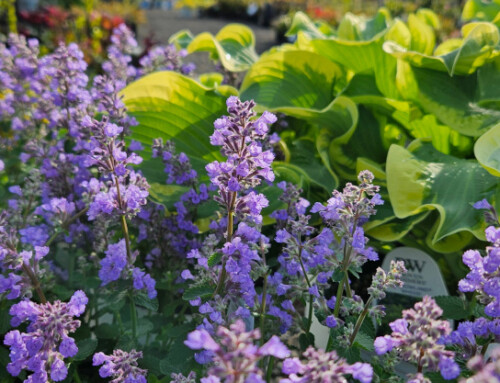With our long, wet winter stubbornly refusing to completely yield to spring’s warmer, sunnier weather, life in the Pacific Northwest this early spring has been a challenge for those of us who wish to get started gardening. With gradually improving weather, though, now is the time to begin repairing your yard, replacing dead or heavily damaged plants, and bringing new life to your garden.
First, now is the time to begin rejuvenating your yard. Typically, lawns in the Pacific Northwest stay green through our mild winters, but after this year’s snow and drying northeast winds, your grass may be brown and in need of some serious help.
After raking up the branches, leaves and other debris on your lawn, your first step in reviving your lawn should be moss control. Despite the harsh conditions this winter, moss has continued to thrive, and it’s never too early to kill it, so while other yard work like reseeding bare patches in your lawn may have to wait until the weather warms, you can kill moss. Stop by the nursery and pick up a bag of fine-granule ferrous sulfate. Apply a dose just before a rain and watch it work its magic, turning moss black in a matter of hours.
Moss grows particularly well in acidic soil, and here in the Pacific Northwest our soil is predictably acidic, in large part thanks the little-known fact that rain (a familiar phenomenon in our neck of the woods) is slightly acidic. After the amount of rain we’ve received since last autumn, I’m guessing our soils have turned even more acidic, so to reduce the acidity of your soil—and thus both discourage moss growth and help grass grow better—take time in the next few weeks to spread fast-acting lime like Espoma Lightning Lime.
The final step in early spring lawn care is a dose of fertilizer to help your lawn recover from a long winter. After you’ve applied your ferrous sulfate and Lightning Lime, feed with Scotts Turf Builder with Moss Control, an excellent blend of nutrients to help grass “wake up” for spring, begin growing again, and battle residual moss problems.
Next, early spring is a great time to get started with planting—and this year you might have a number of plants to replace around your yard. Despite the cool weather, daytime temperatures are warm enough that it’s safe to start planting now.
If you’ve lost trees in your yard due to wind, ice, or snow this winter, why not consider planting a fruit tree or two to replace those you lost? Early spring is a great time to plant fruit trees, and we’re well stocked with bare root trees this time of year.
Now, maybe you’d like to grow a wider variety of fruit than a single tree can offer but don’t have the space or interest in having several trees. For small yards or first-time fruit tree growers, I recommend a combination tree, some of which will produce peaches, apricots, cherries, plums and nectarines all on one tree! Thanks to skillful grafting, each branch on these trees is a different variety of fruit, and an excellent way to enjoy a variety of fresh produce without converting your backyard into an orchard.
Spring may be slow to arrive this year, but that doesn’t mean you can’t start with some gardening. So grab a coat, dig out your garden gloves and enjoy the start of another year!







We have a HUGE amount if moss in our lawn. Should we thatch before applying ferrous sulfate? If we do not thatch what happens to all that dead moss left in the lawn?
Hi Evie, you’re not alone in the amount of moss–a lot of people are battling more moss than ever this spring after such a wet winter! You can thatch before or after applying ferrous sulfate, but either way, for areas with a lot of moss, you need to thatch to remove it. I would recommend putting on the ferrous sulfate now and kill the moss first, then thatch to remove it later this month. You should wait until we’ve had a stretch of dry weather before thatching to ensure you don’t damage your lawn, so that’s why I’d recommend the ferrous sulfate first and thatching later. -David
Spring will be here before we know it. The information about planting the fruit trees is a great idea. I also found the information about treating the moss very informative thank you